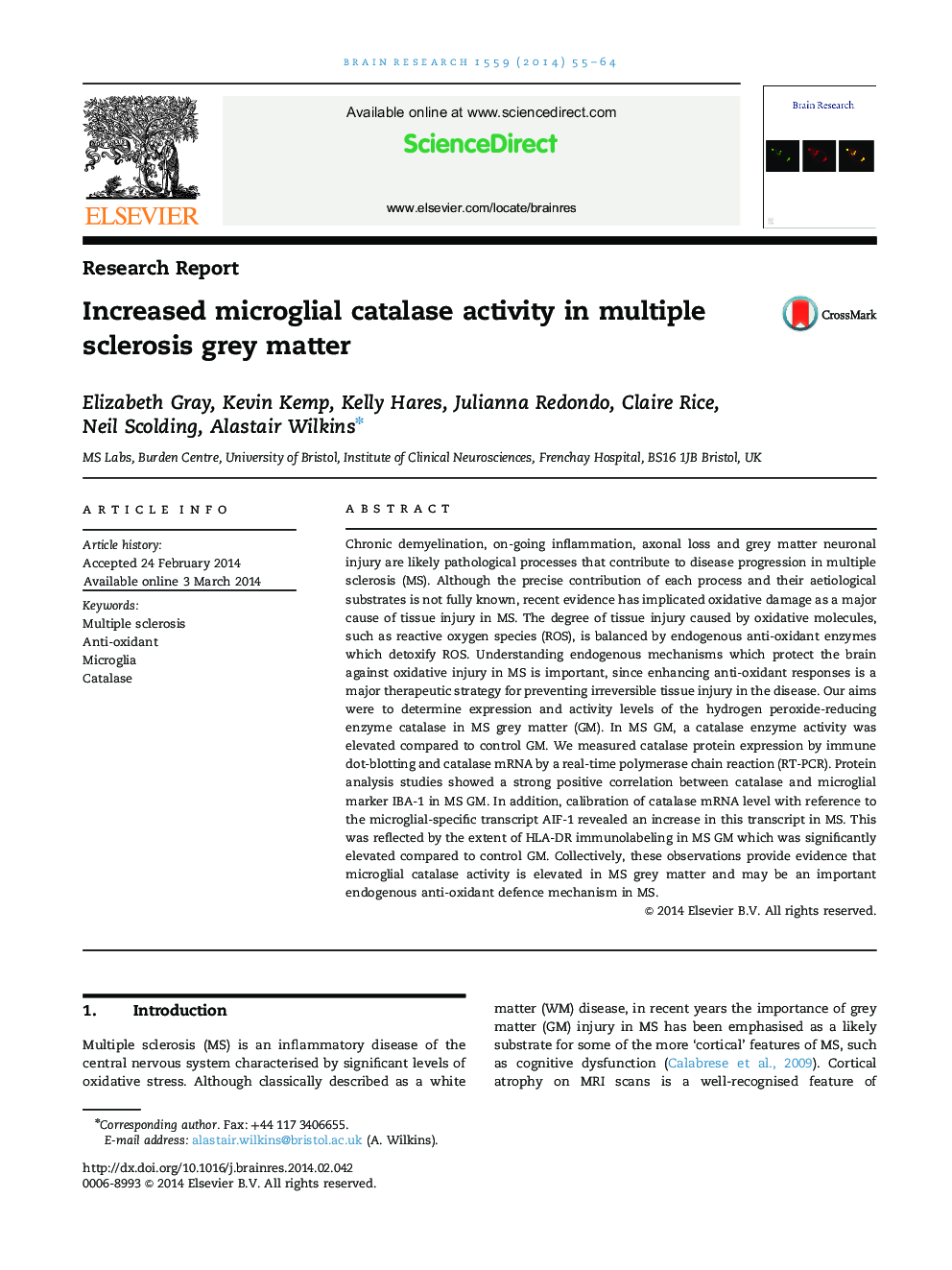| Article ID | Journal | Published Year | Pages | File Type |
|---|---|---|---|---|
| 4324386 | Brain Research | 2014 | 10 Pages |
•Levels of catalase activity are increased in MS grey matter.•Catalase protein levels correlate with microglial markers.•Catalase gene transcription is increased relative to microglial gene transcription.•Microglial numbers are increased in MS grey matter.
Chronic demyelination, on-going inflammation, axonal loss and grey matter neuronal injury are likely pathological processes that contribute to disease progression in multiple sclerosis (MS). Although the precise contribution of each process and their aetiological substrates is not fully known, recent evidence has implicated oxidative damage as a major cause of tissue injury in MS. The degree of tissue injury caused by oxidative molecules, such as reactive oxygen species (ROS), is balanced by endogenous anti-oxidant enzymes which detoxify ROS. Understanding endogenous mechanisms which protect the brain against oxidative injury in MS is important, since enhancing anti-oxidant responses is a major therapeutic strategy for preventing irreversible tissue injury in the disease. Our aims were to determine expression and activity levels of the hydrogen peroxide-reducing enzyme catalase in MS grey matter (GM). In MS GM, a catalase enzyme activity was elevated compared to control GM. We measured catalase protein expression by immune dot-blotting and catalase mRNA by a real-time polymerase chain reaction (RT-PCR). Protein analysis studies showed a strong positive correlation between catalase and microglial marker IBA-1 in MS GM. In addition, calibration of catalase mRNA level with reference to the microglial-specific transcript AIF-1 revealed an increase in this transcript in MS. This was reflected by the extent of HLA-DR immunolabeling in MS GM which was significantly elevated compared to control GM. Collectively, these observations provide evidence that microglial catalase activity is elevated in MS grey matter and may be an important endogenous anti-oxidant defence mechanism in MS.
